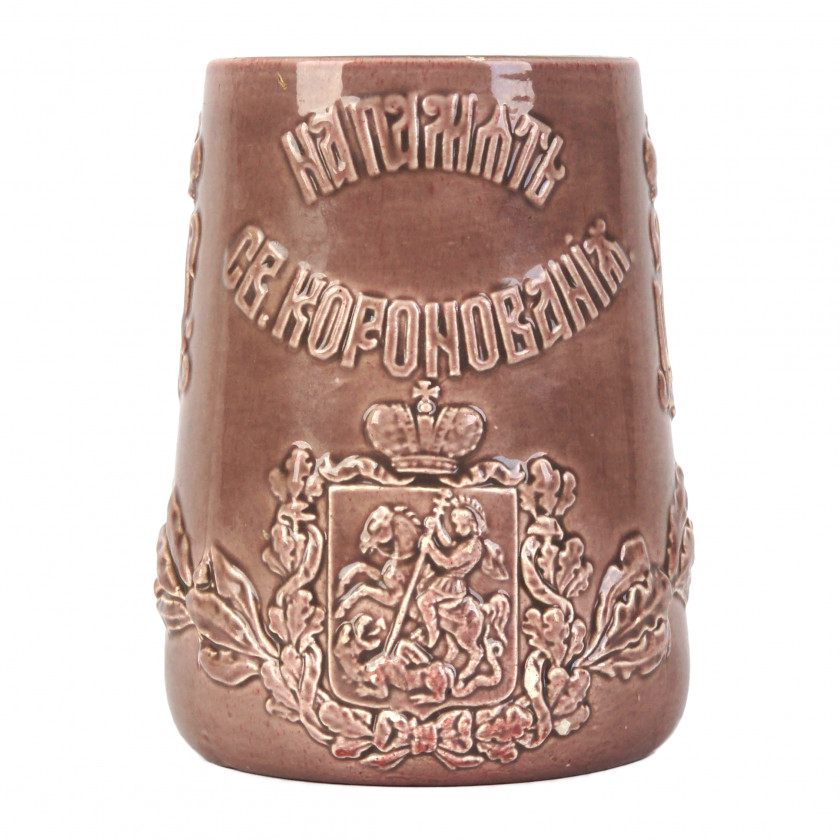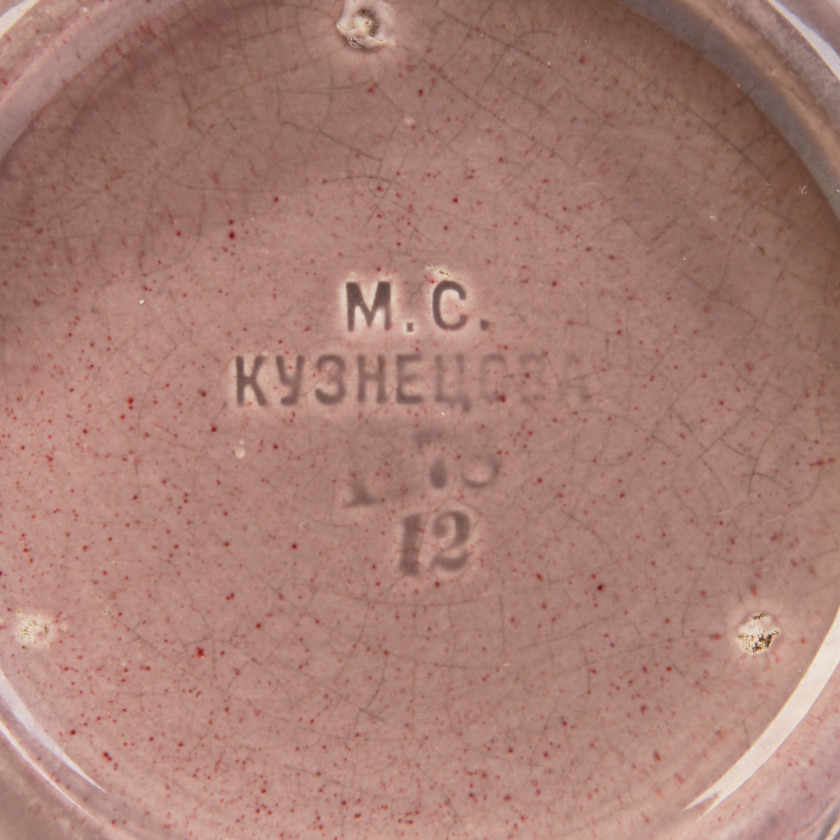Coronation cup
-
Item has been sold
Artist/Maker: Kuznetsov porcelain factory
Artist/Maker Dates: 1832 - 1940
Place of Production: Russia (Russian Empire)
Date of Production: 1896
Materials: faience
Model Nr.: 1878
Height: 12.0 cm.
Condition:
Condition notes: Minor restoration
Description
Back in 1832, the merchant Terenty Kuznetsov, who knew the secrets of porcelain making, decided to start a business of his own and built a small factory with six burning forges on wasteland in Dulyovo located a short distance from Moscow. Dulyovo porcelain was known for its noble whiteness combined with gilding and bright painting.
Terenty, the founder, was an ordinary peasant whose resourcefulness and hard work helped him make his way in the world. He could hardly have imagined that several years later his descendants would challenge the Imperial Porcelain Factory founded on the personal instructions of Empress Yelizaveta Petrovna.
After the abolition of serfdom in Russia in the second half of the 19th century, the national porcelain industry began developing along with other industries during the rapid development of capitalism. The Imperial Porcelain Factory, which made Easter and Christmas souvenirs for the court and palace tableware, was unable to meet the growing demands of the-then “new Russians” – merchants, entrepreneurs, functionaries, wealthy city dwellers, and rural residents. It was the Kuznetsov factories (and not only the Dulyovo shops) that began satisfying the requirements of those social groups. Part of the manufacturing facilities were built by the family, others were purchased from less successful owners. Later on, the Kuznetsovs became even bigger after “swallowing” their main competitor, the Gardner factory, Russia’s first-ever privately owned enterprise founded back in 1766 (today’s Dmitrovsky Porcelain Factory in Verbilki). In 1889, the “M.S. Kuznetsov Partnership for the Manufacture of Porcelain and Pottery Goods” was established. It was called a “porcelain empire” because of practically having a monopoly on Russia’s national porcelain industry. It put out more than half of all Russian-made porcelain articles by 1895.
All the factories owned by the Kuznetsov family (located not only in the Moscow and Vladimir provinces but in Riga, Volkhov and other cities as well), had modern equipment and highly skilled workers and artists. When cheap foreign machine-made products began competing with the Kuznetsov porcelain, the Partnership immediately mechanized their manufacturing units, began using decal transfer paper and stencils, and introduced a new product-figurines. The traditional painting by hand remained, as earlier, their specialty, however. The Partnership gave grants to their students at the Stroganov School and the school sponsored by the Society for the Encouragement of Artists.
Shipping details
- Log in to see the cost for shipping this lot to your address.
Shipping methods are determined by item size, type, fragility and specific characteristics.
Shipping costs are calculated based on carrier rates, delivery distance and packing complexity.
Payment details
Doma Antikvariāts accepts the following payment methods:







